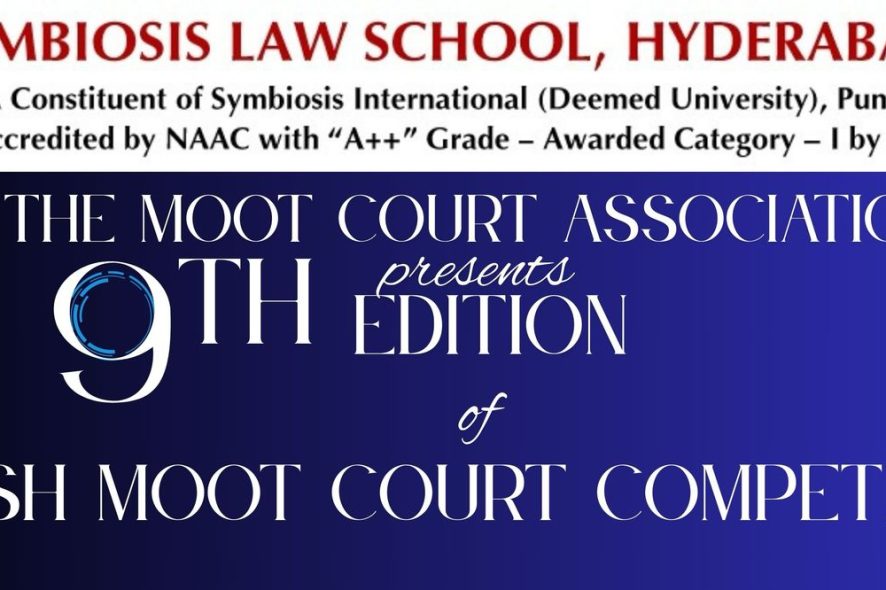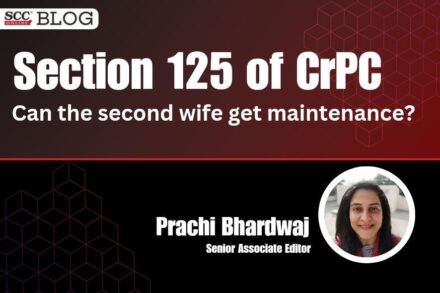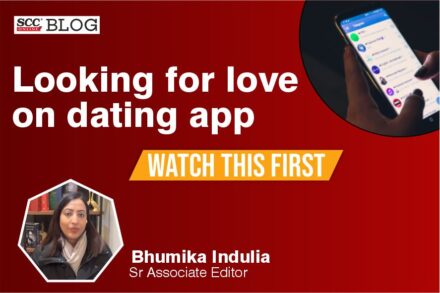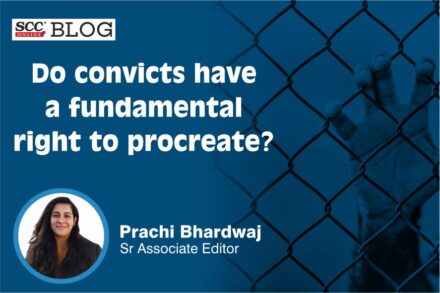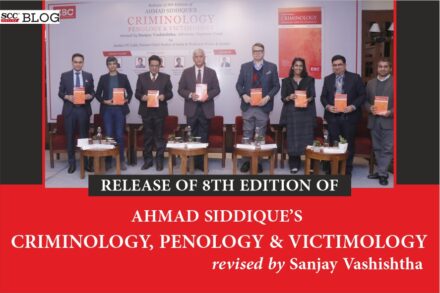Greetings everyone!
The Moot Court Association of Symbiosis Law School, Hyderabad, welcomes you to the live blog of the 9th Symbiosis Law School, Hyderabad Moot Court Competition, 2025 [9th SLSH MCC]. The competition commences on the 4th of April 2025, in collaboration with Eastern Book Company as Skill Partner, SCC Online as Knowledge Partner and SCC Times as the Media Partner. This competition is being held offline. A total number of 26 teams are participating in the competition. The event will include 4 rounds, i.e., Preliminary Rounds 1 and 2, Quarterfinals, Semi-Finals, and Finals.
THEME– Data Privacy & Information Technology Laws
Day 01: 4th April 2025
Inaugural Ceremony
4:18 PM – Hon’ble Smt. Justice G. Sridevi addressed the audience, encouraging students to continue learning and to explore emerging fields within the legal domain actively.
4:29 PM – Hon’ble Shri Justice B.S. Chauhan began his address, shedding light on the significance behind the introduction of Article 51A of the Constitution.
4:35 PM – Justice Chauhan further emphasized the vital role of women in the legal profession and inspired women to continue excelling and leading in the field.
4:55 PM – The discussion turned to the emergence of Artificial Intelligence in law, highlighting how legal professionals leverage AI tools to prepare arguments.
5:00 PM – The event witnessed the unveiling of the trophies and prizes
5:05 PM – The proceedings concluded with a heartfelt vote of thanks.
Day 02: 5th April 2025
Judges Briefing
10:30 am – The Key team, comprising Ms. Anoushka Singh, Ms. Mahima Nidhi, and Ms. Srijan Bisht, commenced the judge briefing session with the bench memorial. They highlighted the critical paragraphs of the proposition and familiarized the judges with landmark judgments that participants are expected to cite during the proceedings.
11:11 am – Felicitation of Judges
Preliminary Round 1
Court Room 1
11:31 am : The Courtroom masters have started the briefing for the oral pleadings.
11:34 am : The Petitioners started with strong arguments addressing the maintainability of the petition.
11:47 am : The Judges questioned the Counsel on the facts of the case along with an interesting perspective on the transformative nature of the AI.
11:49 am : The speaker cited the case of Federal Bank Ltd. V. Sagar Thomas and alleged the violation of Article 21 of the Indian Constitution.
11:51 am : The Judges questioned the speaker to cite alternative remedies that could have be taken before approaching the Supreme Court.
Court Room 2
12:04 pm : The Speaker contented the filing and maintainability of the Public Interest Litigation (PIL) petition.
12:07 pm : The Judges questioned the Speaker on the facts of the precedent cited , Ajay Hasia v. Khalid Mujib.
12:11 pm : The Speaker cited S.4 and S.7 of the DPDP Act in order to strengthen their argument thereby addressing voluntary submission of data by the users and the angle of informed consent.
12:17 pm : The Judges questioned the Speaker with respect to the extent of data that is collected by the parties to the case.
Court Room 3
12:24 pm : The Respondents alleged that the petitioners have wrongly proposed the inclusion of certain parties to the case.
12:27 pm : The Judges questioned the Speaker on the facts of the precedent cited , Ramana Dayaram Shetty v. The International Airport Authority.
12:29 pm : The Speaker addressed the second issue in order to establish the purpose of fraud detection.
12:33 pm : The Judges questioned the Speaker on the tracking of the user behavior on the social media. The Speaker answered the question by stating the research exemptions and the compliance of the guidelines of DPDP Act.
Court Room 4
11:31- The courtroom master is reading out the rules
11:34- The counsel for the petitioner is making their opening statement
11:35- Counsel 1 for the petitioner is dealing with issue 1 & 2 and counsel 2 for the petitioner is dealing with issue 3 & 4
11:36- Counsel 1 for the petitioner has claimed that the right to privacy, along with other fundamental rights, specifically Article 19 (1) of Indian Constitution has been violated.
11:38- Counsel 1 has put forth another issue- Whether the copyright act is equipped enough to deal with AI related copyright infringement?
11:40- The judges are mercilessly grilling the counsel, and the counsel has been responding confidently so far
11:44- The counsel is trying to prove that the instant case also exceeds the scope of the DPDP act
11:46- The counsel is citing section 5 and section 7 of the DPDP act
11:49- The counsel cities the case ‘AIA Singapore’
11:51- Counsel 1 has finished with her opening statement and counsel 2 approaches the dias
11:52- Counsel 2 is arguing that unlawful processing of information is not covered by the exceptions provided for in the DPDP Act
Court Room 5
11:56- Counsel for the petitioner is claiming that the neurolink is using the information of their users for their own personal gain.
11:58- The counsel claims the that the use of information by neurolink does not fall under the ‘legitimate use exception’ provided in section 7 of the DPDP Act
12:01- The counsel cites section 2(i) of the DPDP Act with regards to data fiduciary
12:03- The counsel cites the situation of European Union Directive, whose sole purpose was to deal with serious crimes regarding data breaches and unfair use of data
12:06- The counsel cites section 8 of DPDP Act
12:07- The counsel claims that neurolink is not a vertical business as it derives profit from the database of intense sphere (the other company in the moot prop apart from neurolink pls add the correct name)
12:12- The counsel 2 for the petitioner claims that neurolink along with alana AI is preventing artists and generators from sharing the images that they have generated
12:14- The judges berate the counsel 2 for making up facts and warns him not to repeat the same going forward
12:16- the counsel 2 claims that the use of data for commercial purposes instead of personal use violates section 17(b) of the DPDP Act
Court Room 6
12:34- The counsel for the respondent claims that alana Ai has a computer core and is a learning model.
12:35- The counsel claims that with regard to the images generated, Alana AI simply uses other (copyrighted) works in its database as a frame of reference and does not copy them directly.
12:37- The counsel for the respondent closes its arguments with the simple statement that any content generated by alana AI is NOT a copyright infringement and a prayer
12:39- The counsel for the petitioner begins with their rebuttal, highlighting flaws in the respondents memorial, only to be met by rebukes from the judge
12:40- The counsel for the respondent responds to the rebuttal, citing sections 17(b) and 9 of DPDP Act to back their claims
Court Room 7
11:34 AM: The Petitioners have begun their arguments, elaborating on the case facts as requested by the judges, specifically concerning the alleged infringement of fundamental rights and data protection under Articles 19 and 21.
11:38 AM: The judges inquired as to the enforceability of fundamental rights against a body, in the context of maintaining a writ petition.
11:42 AM: The Petitioner has proceeded to Issue II, citing the K.S. Puttaswamy case. The judges have requested further elaboration on the application of the Digital Personal Data Protection Act (DPDP Act), Information Technology (IT) Rules, and the Consumer Protection Act.
11:47 AM: Speaker 1 requested an extension of time, and the judges asked for a summary of their argument.
Court Room 8
11:52 AM: Speaker 1 has continued with Issue II, Section 7 of the DPDP Act, citing the K.S. Puttaswamy and Anuradha cases. The judges requested clarification on these citations.
11:57 AM: The judges questioned the necessity of the extent of data collection. They requested the speaker to articulate and elaborate on the argument regarding the alleged illegality of the data collection.
12:00 PM: The judges further requested an elaboration on the exemption claimed by Nerul under the DPDP Act.
12:05 PM: The judges inquired about the definition of a data fiduciary, to which the speaker provided further elaboration. The judges have now requested a summary of the case.
12:08 PM: Speaker 2 has commenced their arguments regarding the alleged violation of user rights under the DPDP Act, citing Selvi v. State of Karnataka and emphasizing Article 21. The judges have requested further clarification on the exemption under the DPDP Act.
Court Room 9
12:13 PM: Speaker 2 has commenced explaining Issue III, outlining three sub-issues to be addressed. They began by discussing paragraph 5 of the proposition, citing Section 2(a) of the DPDP Act and asserting the violation of DPDP rights.
12:18 PM: The speaker further clarified that the data extraction does not fall within the purview of the DPDP Act and its rules, thereby infringing upon the rights and consent of the data principals. The judges requested clarification on this point.
12:22 PM: The speaker proceeded with Issue III, citing the case of Sara Anderson to illustrate the use of AI and its mechanisms. They invoked the principle of “garbage in, garbage out,” and provided an example of the recent Ghibli art case. The judges questioned the attribution given to the primary creator and its degree, to which the speaker provided further clarification. They cited the doctrine of fair play in the Constitution, asserting a clear infringement of copyright.
12:26 PM: The speaker requested permission to proceed with the prayer.
12:28 PM: Speaker 1 of the Respondent has commenced their arguments, addressing the invocation of jurisdiction under Article 32. Speaker 1 requested to proceed with the issues, but the judges asked them to first outline the relevant facts of the case and the supporting arguments.
12:31 PM: The Respondent argued that their business model complies with the provisions of the DPDP Act, its rules, and the Constitution of India. The speaker cited K.S. Puttaswamy, outlining the data protection rules mentioned therein and defining consent and its breach. The judges inquired whether a user, having initially consented to data provision, would have the option to opt out later, to which the speaker provided further clarification.
Court Room 10
12:23 pm – The Counsel 2 for Respondents has started their arguments. The Counsel is pleasing on issue 3.
12:31 pm The counsel states the definition of intermediary, and highlights how the respondents come under the Intermediary Rules and have fully complied with it. The counsel states that they are not a data fiduciary.
12:34 pm – The Judges questioned why the respondents are not a data principal.
12:36 pm – the Judge questions whether the draft rules are binding on this Court.
Court Room 11
11:59 am – The counsel for Petitioners is reading out their Prayer for the proceedings.
12:06 pm – The counsel for the Respondent starts with their arguments. The counsel is presenting the facts of the case.
12:11 pm – The counsel states that no part of data processing happens in the country, therefore, has not violated any provisions of the DPDP Act.
12:18 pm – The Judge questioned why the Counsel is bringing the suit as a private commercial suit and how the respondents are not within the ambit of State.
Court Room 12
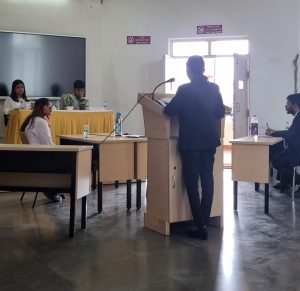
Court Room 13
11:30 am – The Counsel for the Petitioner has started to present their arguments.
11:33 am – The judge questioned whether the Respondent is a state authority, and how the Petitioner is seeking maintainability of this present petition.
11:38 am – The Judges question the Petitioners on how the act of the Respondents infringe their Fundamental Right?
11:45 am – The speaker 2 for the Petitioners have started their arguments. The Counsel is addressing issues 3 & 4.
11:51 am – The counsel states that the Respondents have violated the ‘principle of proportionality’ and that they breached the personal data of its customers.
Preliminary Round 2
Court Room 1
03:03 pm : The Speaker has started addressing Issue 1.
03:07 pm : The Judges questioned the Speaker on the infringement of copyright in the ongoing case.
03:09 pm : The Judges sought clarity from the Counsel on the grounds that establish unfair commercial advantage and error generated by the AI as an output.
03:15 pm : The Judges called out the contradictory statements made by the Counsel in order to consider the latter as an exception to the former statement stating , “Whether AI is an author or not according to the petitioners?”.
03:20 pm : The Counsel cited the case of K.S. Puttaswamy v. Union of India.
Court Room 2
03:26 pm : The Judges sought clarity on the grounds of addressing an entity as data fiduciary.
03:28 pm : The Counsel addressed the issue of dealing with raw data for fraud detection purposes.
03:31 pm : The Counsel made a reference to the K.S. Puttaswamy v. Union of India.
03:34 pm : The Counsel emphasizes on the importance of informed consent and also states the sections violated under the DPDP Act.
Court Room 3
03:41 pm : The Counsel contends to prove the absence of nexus of their party and the user data provided with respect to the concept of data fiduciary.
03:43 pm : The Counsel summed up their arguments by stating the essence of voluntary submission of data by the users for a specified purpose.
03:45 pm : The Judges sought reasonable explanation on the contention of the Counsel stating that their party is not a data fiduciary but merely a data processor.
03:48 pm : The Counsel established strong grounds that clearly differentiate entities that fall under the category of data fiduciary and data processor, according to the sections in DPDP Act.
Court Room 4
3:22- The counsel for the petitioner personified themselves as a betrayed user of neurolink and spoke about the unjust use of his information from a first person perspective
3:24- The counsel for the petitioner said their prayer
3:26- The counsel for the respondent begins their arguments
3:27- The counsel for the respondent argues that it’s the citizens right to approach to the Supreme Court for the infringement of fundamental right
3:28- The counsel for the respondent highlights the inconsistency in the prayer made by the counsel for the petitioner and their arguments, citing that counsel for the petitioners want different reliefs provided for entirely different issues, highlighting their lack of cohesion.
3:31- The counsel for the respondent cites the case Kaushal Kishore v. State of Uttar Pradesh (2023)
3:33- The counsel for the respondent claims the counsel for the petitioner is wasting the time of the supreme court as the Supreme Court lacks the jurisdiction to try this instant case
Court Room 5
3:48- The counsel for the respondent says that the claims against Alana AI are simply allegations, not facts
3:50- The counsel for the petitioner began their rebuttals
3:53- The counsel for the respondent began their responses to the counsel for the petitioner’s rebuttal
Court Room 6
3:57- The counsel for the respondent responds to the rebuttals made the counsel for the petitioner, only to be rebuked by the judges.
4:03- The counsel for the petitioner responds to the counsel for the respondent’s responses, truthfully rebuffing them.
4:05- The counsel for the respondent responds to the responses of the counsel for the petitioner to their response to their rebuttals.
Court Room 7
2:43 PM: The Courtroom Masters have commenced the briefing for the oral pleadings round.
2:46 PM: Addressing the alleged violation of the right to privacy, the Petitioner has begun their arguments. Speaker 1 provided a concise overview of the case facts and outlined the key issues.
2:49 PM: Speaker 1 has commenced with Issue I, elaborating on the concept of reasonable expectation of privacy in various modes of communication.
2:55 PM: Speaker 1 has now begun explaining the jurisdiction of the case, outlining three main points: territorial jurisdiction, minimum contacts theory, and the effects test. She also emphasized public interest and the alleged violation of fundamental rights. The judges further inquired about the maintainability of the case in the court, to which the speaker provided an explanation.
3:00 PM: Speaker 1 requested an additional five minutes to substantiate Issue II, and with the judges’ permission, proceeded to elaborate. The judges posed a question framed as an example, specifically concerning terms and conditions presented during registration, and the understanding behind unauthorized collection of data, to which the speaker provided a detailed answer.
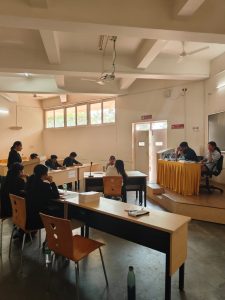
Court Room 8
3:09 PM: Speaker 2 has commenced with Issue III. The judges inquired about a statement made by the speaker concerning the proposition. Further questions addressed the type and nature of the data being collected.
3:14 PM: The judges further inquired whether the court is bound by the judgments pertaining to the sections referenced by the speaker. They also requested a clarification on the distinction between data fiduciaries and data principals, and asked where the company stands in this context.
3:18 PM: The judges requested the speaker to summarize Issue III in brief bullet points, to which the speaker agreed. The judges requested references to relevant Indian case law.
3:21 PM: The judges asked under which section copyright law infringement is being argued, to which the speaker requested permission to proceed with Issue IV. The judges then directed the speaker to proceed with the prayer.
Court Room 9
3:28 PM: The judges inquired about the speaker’s understanding of “intermediary,” to which the speaker cited Section 2(1)(w) of the Indian Information Technology Act, 2000.
3:32 PM: The speaker further explained the operational mechanics of the Mindspace application, distinguishing between data collected directly and data collected through third-party sources.
3:36 PM: The judges requested clarification on the speaker’s understanding of the proposition, specifically regarding Alana AI and Mindspace’s use of browsing pattern tracking. The speaker referenced various paragraph numbers from the proposition to provide a detailed explanation.
3:40 PM: The speaker further elaborated on the understanding of copyright obligations, asserting that the mere public display of an artist’s work does not constitute an exception to copyright infringement. The judges requested further elaboration, which the speaker provided.
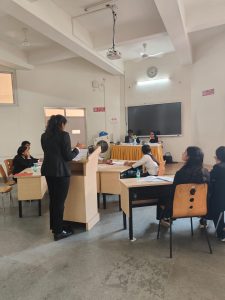
Court Room 10
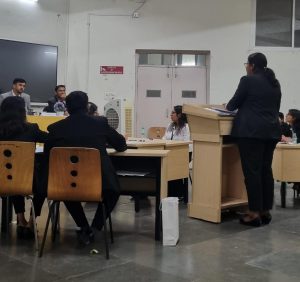
Court Room 11
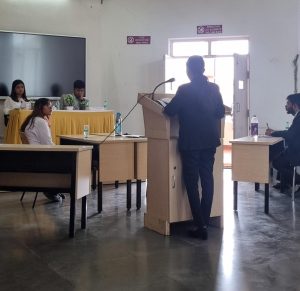
Court Room 12

Court Room 13
3:05 pm – The counsel for the Petitioner is arguing on Issue 1, highlighting that the Respondents have infringed their fundamental right and that the Respondent comes under the definition of State under Article 12.
3:06 pm – The counsel relied on the ‘minimum contacts theory’ to prove the jurisdiction of the case.
3:11 pm – The counsel relies on sections 7 and 8 of the DPDP Act to support their case.
Quarter Finals
Court Room 1
06:53 pm : The Speaker cited foreign judgements. The Judges sought clarity on the relevance of the judgements in the ongoing case.
06:56 pm : The Judges questioned the difference between legitimate use and legitimate interest with respect to the act of their party.
06:58 pm : The Speaker began with Issue 3.
06:59 pm : The speaker pointed how a party can play the role of data fiduciary in one case and that of data processor in another. The Speaker elaborated on the current role of its party in the case with respect to the consent involved in the ongoing case.
07:03 pm : The Judges questioned the differentiating factor between essential and non-essential means.
07:05 pm : The Speaker made a reference to four landmark judgements made by Justice D.Y. Chandrachud.
07:07 pm : The Co-Counsel took the dais.
07:10 pm : The Judges sought clarity on the violation of exclusive right with respect to copyright.
07:14 pm : The Counsel stated four major factors that would be dealt in the current issue.
07:20 pm : The Counsel presented the final arguments to the Bench.
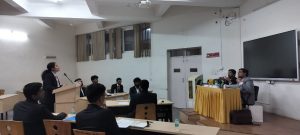
Court Room 2
6:41 PM: The Courtroom Masters have commenced the briefing for the oral pleadings round.
6:44 PM: Speaker 1 has begun with a brief summary of the case facts. The speaker then outlined the four issues of the case and proceeded to address Issue I.
6:50 PM: The judges raised concerns regarding the use of a Public Interest Litigation (PIL), to which the speaker responded by citing the violation of fundamental rights under the Constitution of India. The judges further questioned the decision to approach the Supreme Court without exhausting other available options beforehand.
6:53 PM: The speaker cited the Kaushal Kishore case, prompting the judges to question its applicability and the judgment’s relevance. Further inquiries were made regarding the commercial use of materials in relation to foreign jurisdictions.
6:56 PM: Speaker 1 proceeded to Issue IV, addressing the alleged copyright infringement of certain artists’ works. The judges sought further clarification. They also presented a hypothetical scenario involving the distinction between inspiration and direct copying of art styles, to which the speaker provided further explanation.
7:02 PM: The speaker began discussing the doctrine of merger. Further explanation of Issue IV led the judges to request clarification on how copyright infringement could be established if an exact image was not being reproduced. They also requested relevant case law citations.
7:14 PM: Speaker 2 requested permission to present their arguments regarding the exemption clause first, but the judges directed them to first establish an understanding of data fiduciaries under the DPDP Act.
7:20 PM: The speaker commenced arguments regarding research exemptions, referencing Rule 15 of the DPDP Rules under Issue II and connecting it to paragraph 5 of the proposition. DPDP Rule Schedule II was also referenced. The judges then asked for clarity on why the amount of data collected and used, was considered reasonable.
7:28 PM: The judges further pointed out that Schedule II of the DPDP Rules primarily applies to the state and requested further clarification from the speaker. The concept of commercial investment within the ambit of the DPDP Rules and Act was also addressed.
7:34 PM: The Petitioner commenced their prayer.
Court Room 3
6:51- The counsel for the petitioner has claimed that the lack of AI related provisions in the copyright act is a violation of Article 19(1) of the Indian Constitution.
6:52- The counsel for the petitioner is establishing the territorial jurisdiction of this court in the instant case
7:00- The counsel for the petitioner cites Section 8(5) of the DPDP Act
7:03- The counsel 2 for the petitioner tries to establish that neurolink is a data fiduciary and is processing the data of their users without consent
7:04- The counsel 2 for the petitioner refers to the memorial to lay down the definition of data fiduciary
7:10- The judge asks how neurolink’s database even gets this information, the counsel 2 for the petitioner refers to the memorial to answer the same.
7:18- The counsel 2 for the petitioner defers to the 4th issue
7:21- The counsel 2 for the petitioner claims that Neurolink’s storing of data is violating section 30 of the Copyright Act.
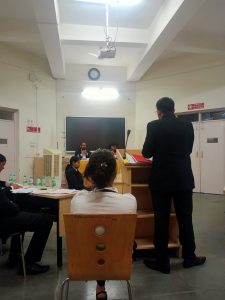
Court Room 4
6:52 pm – The counsel for the Petitioner has started their arguments
6:54 pm – The Petitioner relies on the theory of minimum contact. They claim that the Respondent comes under the definition of State and that the present writ is maintainable.
6:56 pm – the counsel starts with issue 2 – The judge questioned why a private entity does not come under the ambit of Section 7 sub section e to h of the DPDP Act.
7:04 pm – the counsel relies on the case of Google India v Vishaka Industries, to support their argument.
7:06 pm – The speaker 2 for the Petitioner starts their arguments.


